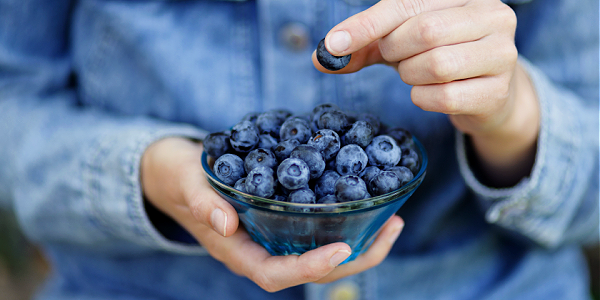
Since swai fish is among the less commonly consumed seafood varieties, it's natural to have questions about swai fish nutrition, benefits, and risks.
Moreover, some fish farms don't responsibly raise swai fish, flooding search engines with the question, “Why is swai fish bad for you?”
Swai may seem mysterious, but we have the answers to all things swai. Ahead, we dive into swai cooking tips, consuming it safely, and more.
What Is Swai Fish?
Swai fish, also known as Asian catfish, is a variety of Vietnamese catfish. It’s also known as basa fish, bocourti, and an iridescent shark in some places.
Although this freshwater fish is native to Southeast Asia and Vietnamese rivers like the Mekong River, it’s a relative of the North American catfish and striped catfish. It’s become an increasingly popular type of seafood in the past few decades.
When eaten in the United States, swai fish is imported from Vietnam. It’s shipped frozen, and is often incorporated into battered, fried, or broiled fish dishes.
Swai Fish Nutrition
Nutritionally, swai is similar to other varieties of fish, although it doesn’t quite offer as many healthy fats and protein as fatty fish like salmon. A typical 4-ounce fillet of swai fish contains:
• Calories: 70 cals
• Carbs: 0 grams
• Fat: 1.5 grams
• Protein: 15 grams
Is Swai Fish Healthy?
When swai is compared to other fish, heart-healthy fats—like omega-3 fatty acids—are lacking. While swai doesn’t offer as much protein as other varieties of fish, it’s still a good source of protein. For folks limiting carbohydrates, swai comes with zero carbs.
As an animal food, swai fish is a good source of B vitamins like niacin (vitamin B3) and vitamin B12. One 4-ounce serving of swai provides around 20% or above of the recommended daily intake for vitamins B3 and B12.
It’s important to note that sodium is often added to swai fish during processing so that the swai fish retains moisture. For this reason, swai fish might not be the best choice for people looking to lower sodium intake.
3 Reasons to Consider Swai Fish for Your Next Dish
It’s first important to note that if you choose to eat swai fish, knowing where it’s been sourced is important. Not all fish come from facilities that participate in responsible fish farming practices.
Purchasing from reputable brands, such as bistroMD, can also ensure fish safety. For instance, bistroMD's catfish come from the coastal plains of eastern North Carolina. The fish swim in pure water free of pesticides or synthetic chemicals and eat a diet native to the species.
Given the cons below, swai fish still has its advantages. It’s become increasingly popular in commercial and home kitchens for many reasons, including its affordability and versatility.
It’s Affordable
Swai fish is inexpensive, making it easy to integrate into your diet if you haven’t had it before. Keep in mind that higher-quality swai fish may cost more, but may be worth the cost if you want to avoid the risks.
It’s Tasty
Swai fish has a pleasant, neutral taste, which pairs well with other foods. Its versatile, mild flavor makes it a favorite among seafood restaurants and at-home cooks. It can also be seasoned as desired and easily takes on other ingredients' flavors.
It Adds Variety
Due to its versatility, swai fish can be incorporated into many dishes. In America, it’s commonly battered and fried. It’s commonly used in dishes like curry in Southeast Asia.
Why Is Swai Fish Bad for You?
If you choose to eat swai fish, knowing where it’s been sourced is important. Not all fish come from facilities that participate in responsible fish farming practices.
Purchasing from reputable brands, such as bistroMD, can also ensure fish safety. For instance, bistroMD's catfish come from the coastal plains of eastern North Carolina. The fish swim in pure water free of pesticides or synthetic chemicals and eat a diet native to the species.
Remember that swai looks similar to other fish, so you may have been served swai fish at a restaurant without knowing it.
Antibiotic Overuse
Some swai fish farms are crowded, and farmers use methods like antibiotics and other chemicals to combat infection. Unfortunately, the residues from these antibiotics can remain in the seafood and water even after the fish are processed for eating.
When antibiotics are used in abundance, bacteria can become resistant. If antibiotics are overused at fish farms, the fish risk carrying bacteria that won’t respond to antibiotics when they get sick. Since the antibiotics given to fish are similar to those given to humans, this can become a serious problem.
In other words, it’s important to seek out antibiotic-free sources when possible if this concerns you. You can also eat swai fish sparingly if you are in good health and not usually susceptible to infection.
Vibrio Bacteria
Speaking of infections, vibrio bacteria—which cause the human illness known as vibriosis)—can be present in certain coastal waters. This is especially true in areas of Southeast Asia like Vietnam where climates are tropical, and the weather can be humid, making the water temperature warm (a perfect home for bacteria to feed).
Vibrosis is caused when an individual eats raw or undercooked fish, or when an open wound is exposed to water containing the vibrio bacteria. Side effects of this infection can range from mild to serious, sometimes resulting in death.
Luckily, cooking the swai fish well can help kill harmful bacteria. However, those with liver problems or compromised immune systems may want to stay away from swai altogether.
Heavy Metals
As with other types of fish, eating swai may put you at risk for mercury contamination. Since swai fish is typically imported, testing for heavy metals along the way becomes complicated.
The presence of heavy metals may be of particular concern to certain populations, such as pregnant people, children, immunocompromised individuals, or the elderly.
Swai Fish Benefits & Risks: Final Thoughts
Although swai fish is not as nutritious as its fatty fish counterparts, this Southeast Asian native is still a good source of a few key nutrients. It’s well-liked by commercial chefs and home cooks alike, thanks to being an affordable, appetizing, and versatile alternative to other varieties of fish.
However, swai fish does carry some risks, and those with weak immune systems may want to stay away. And as always, it's best to consult your doctor or dietitian for individual guidance.






